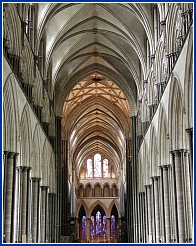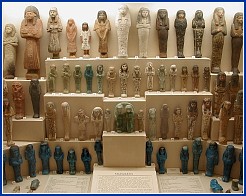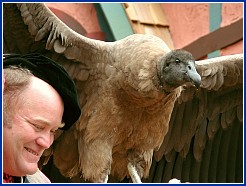Digital
vs Film Photography
Updated April 18, 2010
 This is a subject often hotly debated on various
internet newsgroups and websites. I don't pretend to offer the
'final word' here, but just my personal perspective. And there's
more to this comparison than just a "pixel count," although
that is certainly one issue that needs to be addressed. Moreover,
digital photography opens up possibilities that just don't exist
in the film world.
This is a subject often hotly debated on various
internet newsgroups and websites. I don't pretend to offer the
'final word' here, but just my personal perspective. And there's
more to this comparison than just a "pixel count," although
that is certainly one issue that needs to be addressed. Moreover,
digital photography opens up possibilities that just don't exist
in the film world.
 Film:
Film:
As to pixel count, the conclusion
I have reached is that 35mm film can potentially contain at least
10 megapixels worth of resolution; how much more will depend on
the type of film, quality of the optics used to produce the image,
etc. This is equivalent to say a 3900x2600 pixel image file. The
advantage of having a high number of pixels is twofold: 1. the
more pixels you have, the better quality print, especially at
larger sizes, and 2. you have more flexibility in cropping.
But in order to get a digitized
file for use on the computer, you must have a very high quality
scanner to do this. They would typically run $1500 or much higher
for a professional "drum" scanner. You must also consider
the time element: you take your shots, get them developed at the
lab, and once in your hands, run them through your scanner (which
at the highest quality can take several minutes or more per image).
Another important consideration
is that you don't know how good your shots are until they're back
from the lab. For an experienced photographer, under fairly controlled
conditions, this may not be that big a concern, but even there,
tricky lighting conditions can be problematic, film can get lost,
the lab can mess up, etc. Plus, you're paying for every shot,
regardless of whether it is good or not.
And if you are staying purely
within the film/chemical area, and not digitizing at all, then
you need to own, or have access to, a darkroom. Most shots will
need at least a little "touching up" to show all that
you're intending for the image. This is potentially a costly,
and problematic area, as most can't afford, or don't have ready
access to a chemical darkroom.
 Digital:
Digital:
Currently, the highest resolution
digital SLR's are the Canon 1Ds (11.1 megapixels, 4536x3024 pixels)
and the Kodak DCS 14n (13.5 megapixels, 4500x1300 pixels). This
is now clearly in the same ballpark as scanned film. So purely
on a resolution basis, the best digital SLR's are definitely competitive
with scanned 35 mm film. The soon to be available Canon 1D Mark
II, at 8.2 megapixels (3504x2335 pixels) is also probably close
enough, based on preliminary reports, to yield comparable results.
Where digital really shines
is in providing immediate feedback, on the scene, when the opportunity
is there to adjust and reshoot as needed. You can view the images
taken on the camera's LCD Screen, and can assess framing, focus,
etc. Many of the better digital cameras additionally provide a
"histogram" display, which will graphically show whether
or not a shot is properly exposed. If the result is not what you're
looking for, you can just delete the shot, adjust your camera
settings, and keep reshooting until you have what you want. There
is no cost per image once you have invested in the equipment,
and so one can experiment freely, trying things that you generally
would avoid with film.
 Another
unique advantage in digital photography is ISO, or film speed,
control. In film photography, you choose the film speed based
on your expected shooting needs. But you run into different conditions,
and need a different ISO film, you either need a second camera
loaded with this film, or manually replace one roll with another.
In digital cameras, all you need to do is change a setting, and
you can keep shooting. Some of the better digital cameras offer
ISO ranging from 50 to 3200, which is a very wide range. There
is some increase in "noise" (analogous to film "grain"),
but even this can be rectified to a fair degree by editing with
the right software. And recent technological developments has
resulted in dramatic reduction in the noise at higher ISO, and
most reviewers conclude that the digital noise at high ISO is
markedly better than film grain at similar or lesser ISO.
Another
unique advantage in digital photography is ISO, or film speed,
control. In film photography, you choose the film speed based
on your expected shooting needs. But you run into different conditions,
and need a different ISO film, you either need a second camera
loaded with this film, or manually replace one roll with another.
In digital cameras, all you need to do is change a setting, and
you can keep shooting. Some of the better digital cameras offer
ISO ranging from 50 to 3200, which is a very wide range. There
is some increase in "noise" (analogous to film "grain"),
but even this can be rectified to a fair degree by editing with
the right software. And recent technological developments has
resulted in dramatic reduction in the noise at higher ISO, and
most reviewers conclude that the digital noise at high ISO is
markedly better than film grain at similar or lesser ISO.
Whether you get your digital
images by scanning slide or negative film, or from a digital camera,
the use of the 'digital darkroom' is extremely helpful. Software
is readily available (free or inexpensive at the low end, up to
several hundred dollars at the high end), and if one devotes a
little time and effort, you can become fairly adept at improving
whatever images you start with. And again, experimenting is free.

Conclusion:
First, one must consider
what will be done with the image. If one is primarily concerned
with a relatively small image (say up to 640x480 pixels) for use
on a webpage, then even an inexpensive digital camera will provide
very satisfactory results. If one wants to make a 20" x 30"
or larger print for the most demanding professional and critical
public display, (and especially if there is any significant cropping
that needs to be done), then even 35mm film would probably not
be up to the job, and a medium or large format film camera would
be needed.
My conclusion is that for
very high quality images and prints (up to 13" x 19"
or even higher with the use of some specialized software), a good
digital camera system, in the right hands, and with appropriate
post-processing, is more than up to the job, and is the equal
(or better) of 35mm film cameras. The advent of digital Single
Lens Reflex systems in the last year have enabled photographers
to use the same high quality lens systems used by professional
film photographers (made by Canon, Nikon and other quality manufacturers)
on a digital body. To me, this gives the best of both worlds.
And higher resolution/quality digital bodies will continue to
be developed, so you can keep all the lenses and accessories,
upgrade the camera back, and stay on the crest of the wave of
digital technology.
A number of professional
photographers have addressed this question as well, and have drawn
similar conclusions, sometimes going so far as to say that the
best digital SLR's can even be compared with medium format photographs.
For example, see this article called "The Ultimate Shootout" by Michael Reichmann of the Luminous
Landscape.
Consider
deals on camera lenses to save on your photography expenses.
Click here to return to the Home Page
 This is a subject often hotly debated on various
internet newsgroups and websites. I don't pretend to offer the
'final word' here, but just my personal perspective. And there's
more to this comparison than just a "pixel count," although
that is certainly one issue that needs to be addressed. Moreover,
digital photography opens up possibilities that just don't exist
in the film world.
This is a subject often hotly debated on various
internet newsgroups and websites. I don't pretend to offer the
'final word' here, but just my personal perspective. And there's
more to this comparison than just a "pixel count," although
that is certainly one issue that needs to be addressed. Moreover,
digital photography opens up possibilities that just don't exist
in the film world. Film:
Film: Digital:
Digital: Another
unique advantage in digital photography is ISO, or film speed,
control. In film photography, you choose the film speed based
on your expected shooting needs. But you run into different conditions,
and need a different ISO film, you either need a second camera
loaded with this film, or manually replace one roll with another.
In digital cameras, all you need to do is change a setting, and
you can keep shooting. Some of the better digital cameras offer
ISO ranging from 50 to 3200, which is a very wide range. There
is some increase in "noise" (analogous to film "grain"),
but even this can be rectified to a fair degree by editing with
the right software. And recent technological developments has
resulted in dramatic reduction in the noise at higher ISO, and
most reviewers conclude that the digital noise at high ISO is
markedly better than film grain at similar or lesser ISO.
Another
unique advantage in digital photography is ISO, or film speed,
control. In film photography, you choose the film speed based
on your expected shooting needs. But you run into different conditions,
and need a different ISO film, you either need a second camera
loaded with this film, or manually replace one roll with another.
In digital cameras, all you need to do is change a setting, and
you can keep shooting. Some of the better digital cameras offer
ISO ranging from 50 to 3200, which is a very wide range. There
is some increase in "noise" (analogous to film "grain"),
but even this can be rectified to a fair degree by editing with
the right software. And recent technological developments has
resulted in dramatic reduction in the noise at higher ISO, and
most reviewers conclude that the digital noise at high ISO is
markedly better than film grain at similar or lesser ISO.